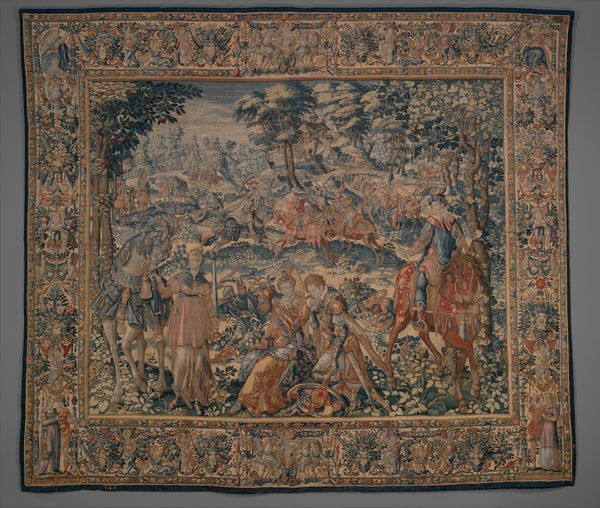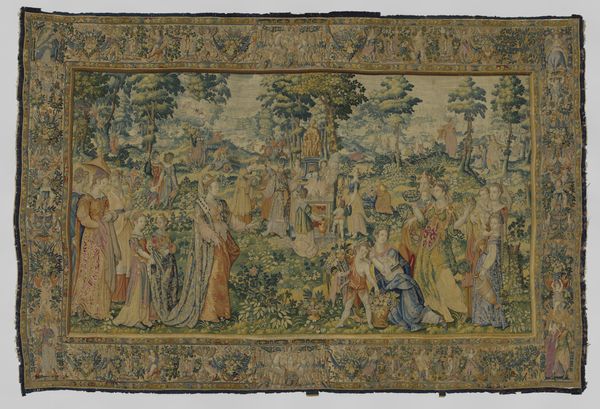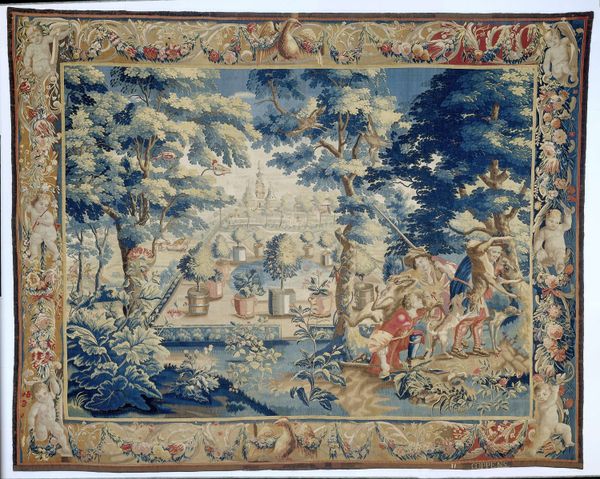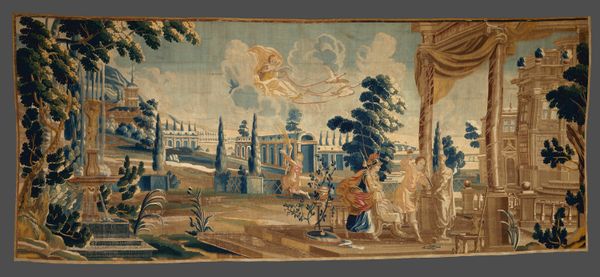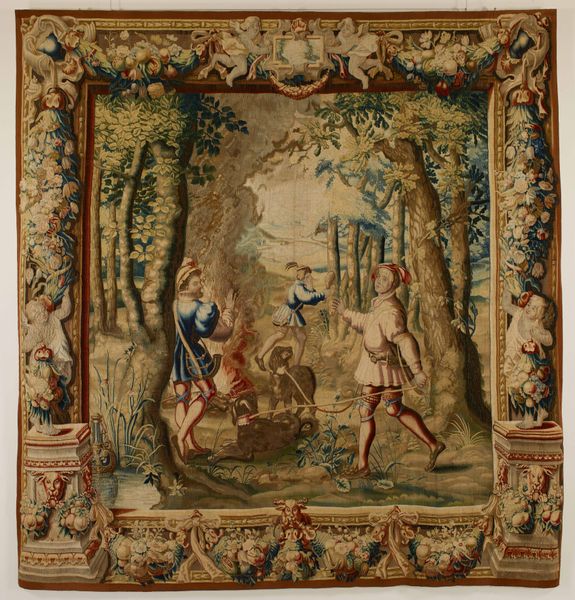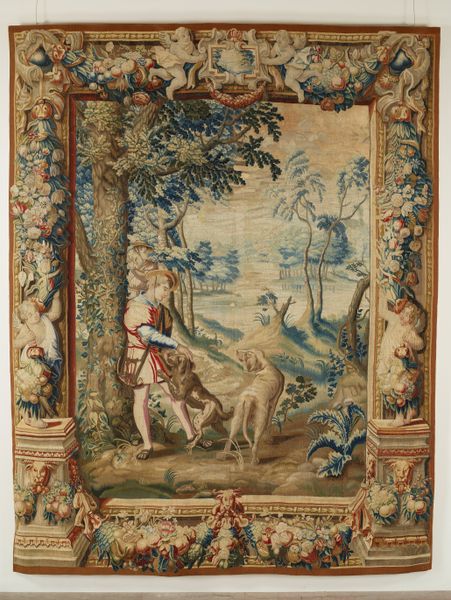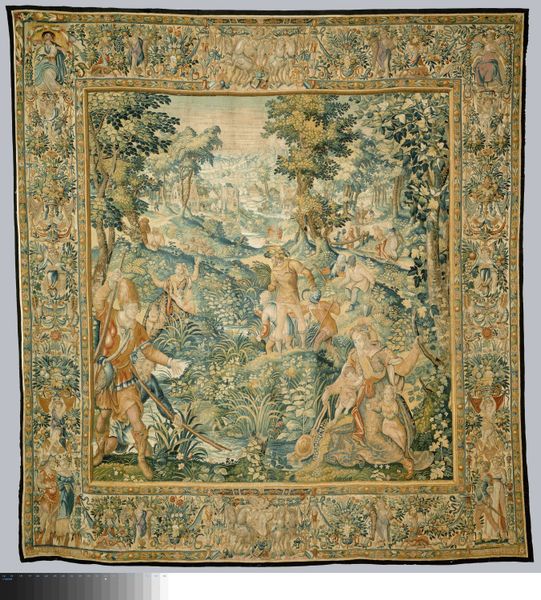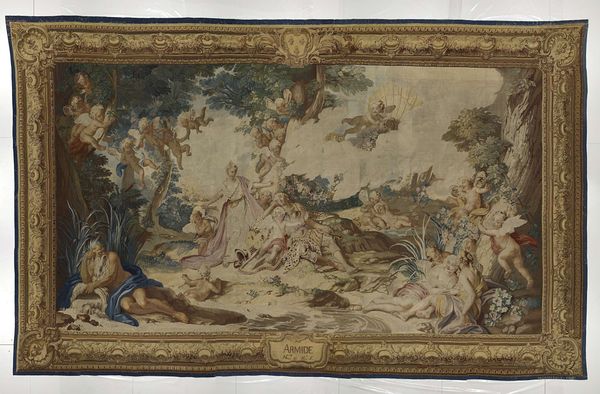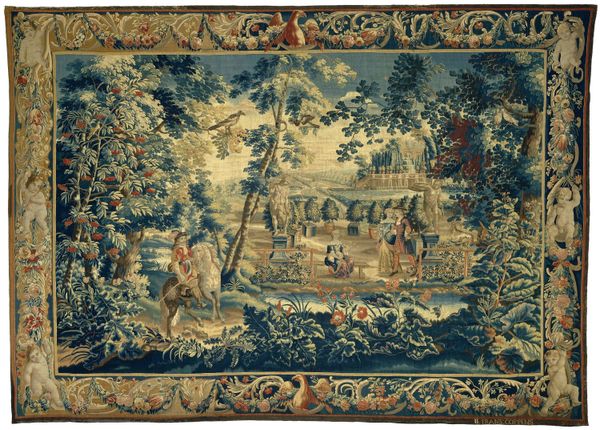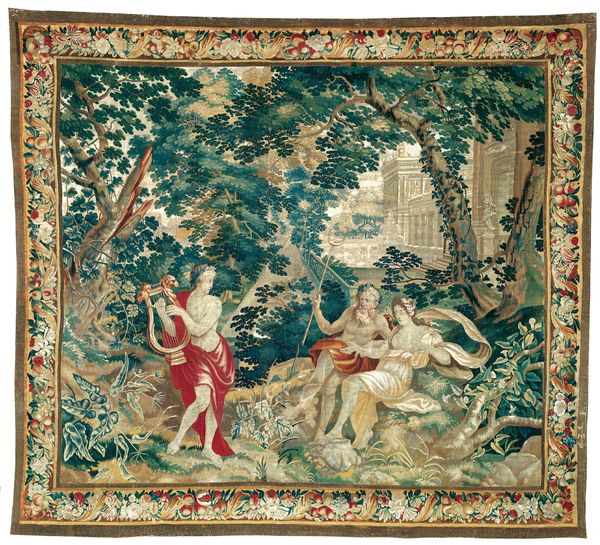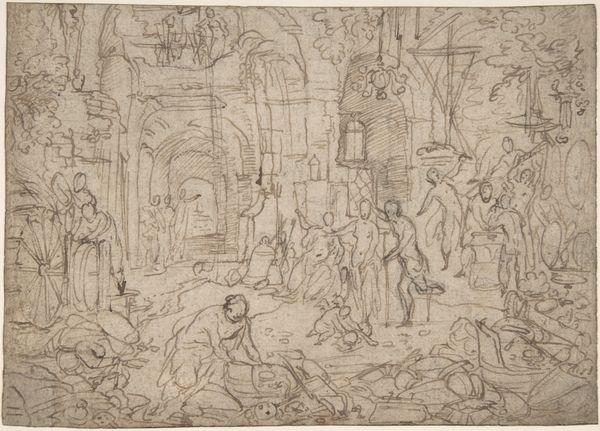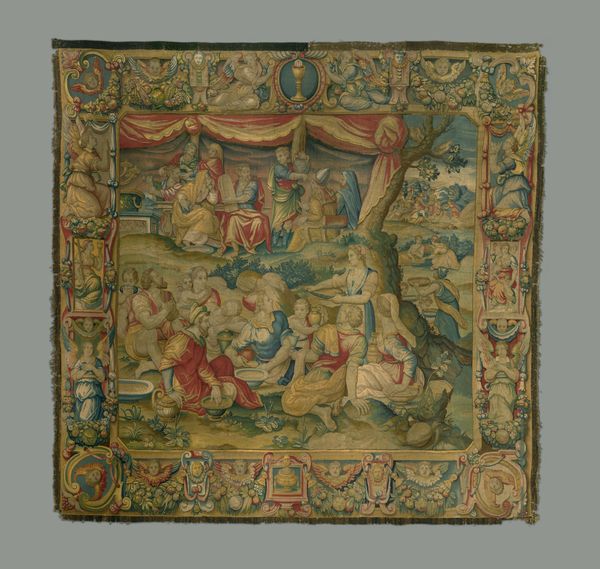
Mercury Changes Aglauros to Stone, from the Story of Mercury and Herse 1535 - 1575
0:00
0:00
textile
#
narrative-art
#
textile
#
mannerism
#
figuration
#
11_renaissance
#
oil painting
#
history-painting
#
decorative-art
Dimensions: 170 1/16 x 283 1/16 in. (432 x 719 cm); weight confirmed, includes tube: 14 ft. 9 in. × 23 ft. 6 in., 199 lb. (449.6 × 716.3 cm, 90.3 kg)
Copyright: Public Domain
Curator: Looking at "Mercury Changes Aglauros to Stone, from the Story of Mercury and Herse," a textile work, possibly a tapestry, created between 1535 and 1575 and currently residing at the Metropolitan Museum of Art, what strikes you? Editor: It feels like looking through time, doesn't it? All faded, like a dream half-remembered. There’s a certain stiffness to the figures that's strangely compelling, like frozen gestures. Almost tragic. Curator: Giovanni Battista Lodi da Cremona has given us a window into Renaissance perceptions of classical mythology and power. Woven into the fabric of this piece, we see the visual manifestation of social narratives around deities and mortals during that era. Editor: Power definitely. Mercury seems oddly aloof for someone wielding the stone-cold touch. It's as if he's thinking, "Oh bother, another transformation." There’s also something playful about the border…are those little cherubs flirting? Curator: Indeed! Borders were often integral parts of these tapestries, and the cherubs signal the pervasive influence of decorative arts of the period. What we might now deem excessive or purely decorative signaled status, education and taste, both of the commissioner and its creator. Tapestries like this one, as narrative art, conveyed not just a story but a carefully curated worldview. Editor: It's also about drama, isn't it? That moment of sudden petrifaction—quite the party trick. Aglauros caught in the middle of her transgressive act...what did she *really* expect from challenging a god like that? Talk about turning your bad attitude into stone-cold reality. I wonder if that artist ever faced judgment or transformation after their piece went on view. Did some powerful duke not like it? And poof! Off to the dungeons... Curator: Those tapestries indeed acted as status symbols in society, their acquisition demonstrating political, social, and monetary prestige of the family which collected those objects. And tapestries of that size certainly also functioned as assertions of power themselves. Editor: I will admit that reflecting on "Mercury Changes Aglauros to Stone" has definitely softened me. The next time I'm facing someone stubborn I might pause and whisper an incantation: from stubbornness to stateliness in one swift act! Thank you for enriching that thought and, with it, my entire attitude! Curator: It's been illuminating for me, too, reflecting with you how historical artifacts might reflect upon our current narratives. It also shows how important the social and political lenses of the Renaissance were to our common worldviews even now.
Comments
No comments
Be the first to comment and join the conversation on the ultimate creative platform.
